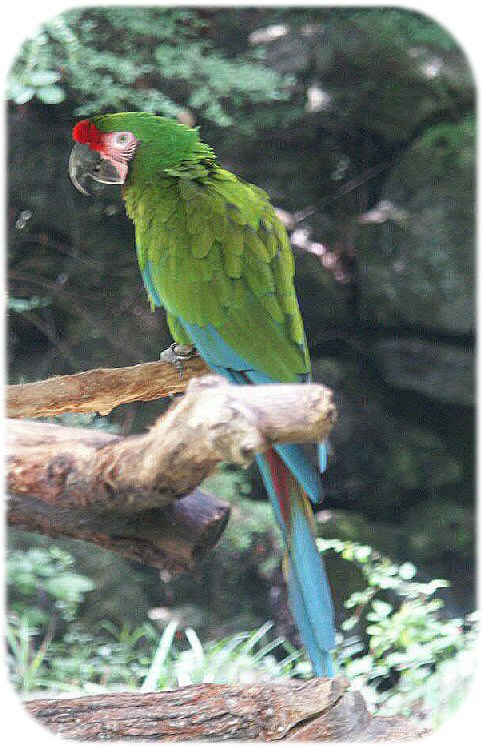 |
|
Name: Military Macaw |
|
Scientific name: Ara militaris |
|
Range: Northern South America |
|
Habitat: Tropical Zones |
|
Status: Endangered |
|
Diet in the wild: fruit, vegetable matter, nuts and seeds |
|
|
|
|
 |
|
Name: Military Macaw |
|
Scientific name: Ara militaris |
|
Range: Northern South America |
|
Habitat: Tropical Zones |
|
Status: Endangered |
|
Diet in the wild: fruit, vegetable matter, nuts and seeds |
|
|
|
|
| Personal Observations:
The Military Macaws are an extremely loud group of birds. Their noise gives them away long before you see them. They blend in very well with their surroundings. If they are on a high limb of a tree, they almost seem to disappear. However, when you do see them they are beautiful birds who seem to be communicating with each other. They also seem to be a little bit aggressive. |
| Source Materials:
Oliver L. Austin Jr.
The Online Book of Parrots
The Military Macaw Page
|
Page author: |